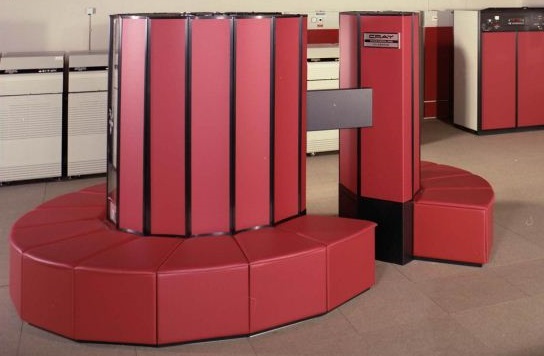


The Central Computing Department, headed by Brian Davies, took over from the former RAL Computing Department and was responsible for mainframe computing and networking activities at the Rutherford Appleton Laboratory. A high end supercomputing service was added in 1987.
The mainframe services continued to be provided on IBM compatible computers into the 1990s when they were gradually transferred to a number of new facilities based on more cost-effective technologies.
The supercomputing activity was a consequence of a Joint ABRC, UGC and Computer Board Working-Party which reported in July 1985. A Cray X-MP/48, then the most powerful supercomputer on the market, was installed at the Atlas Centre for peer-reviewed use by grant-holders from any of the UK Research Councils or from the British Academy. This machine was replaced in 1992 by a Cray Y-MP machine with roughly three times the capacity which was to continue in service until 1996.
There were other high performance computing activities from 1989 when the IBM mainframe was upgraded, via a three-year IBM joint study agreement, to enable selected users to investigate numerically intensive parallel vector-processing computational methods on a system with large memory.
On networking, both the UK-wide academic network JANET, managed by the Joint Network Team (JNT), and the RAL core local area network were developed substantially during this period in extent, capacity and resilience, and the Department's involvement in the European Academic Research Network (EARN) continued. In 1994 all members of the JNT transferred to a new company, UKERNA, which took over responsibility for national academic networking.
The Department also worked on developments in two supporting technologies which were becoming vital to large scale computing: data storage and retrieval, and visualisation.
Around the end of this period a number of organisational changes took place. The Science and Engineering Research Council, under whose management RAL had operated since 1981, was dissolved and its responsibilities were distributed among three new Research Councils: the Particle Physics and Astronomy Research Council (PPARC); the Engineering and Physical Sciences Research Council (EPSRC); and the Biotechnology and Biological Sciences Research Council (BBSRC). RAL and Daresbury Laboratory were merged into a single organisation, known as DRAL, which was assigned to the EPSRC.
As a consequence, the concept of SERC Central Computing services at RAL ceased to exist. Funding was dispersed among SERC's successor bodies which reviewed their own needs for ongoing computing services at RAL and tailored them accordingly, thereby setting the scene for future computing activities.
A further organisational change at this time was that the Central Computing and Informatics Departments at RAL were merged back into a single entity, to be known as Computing and Information Systems Department (CISD).